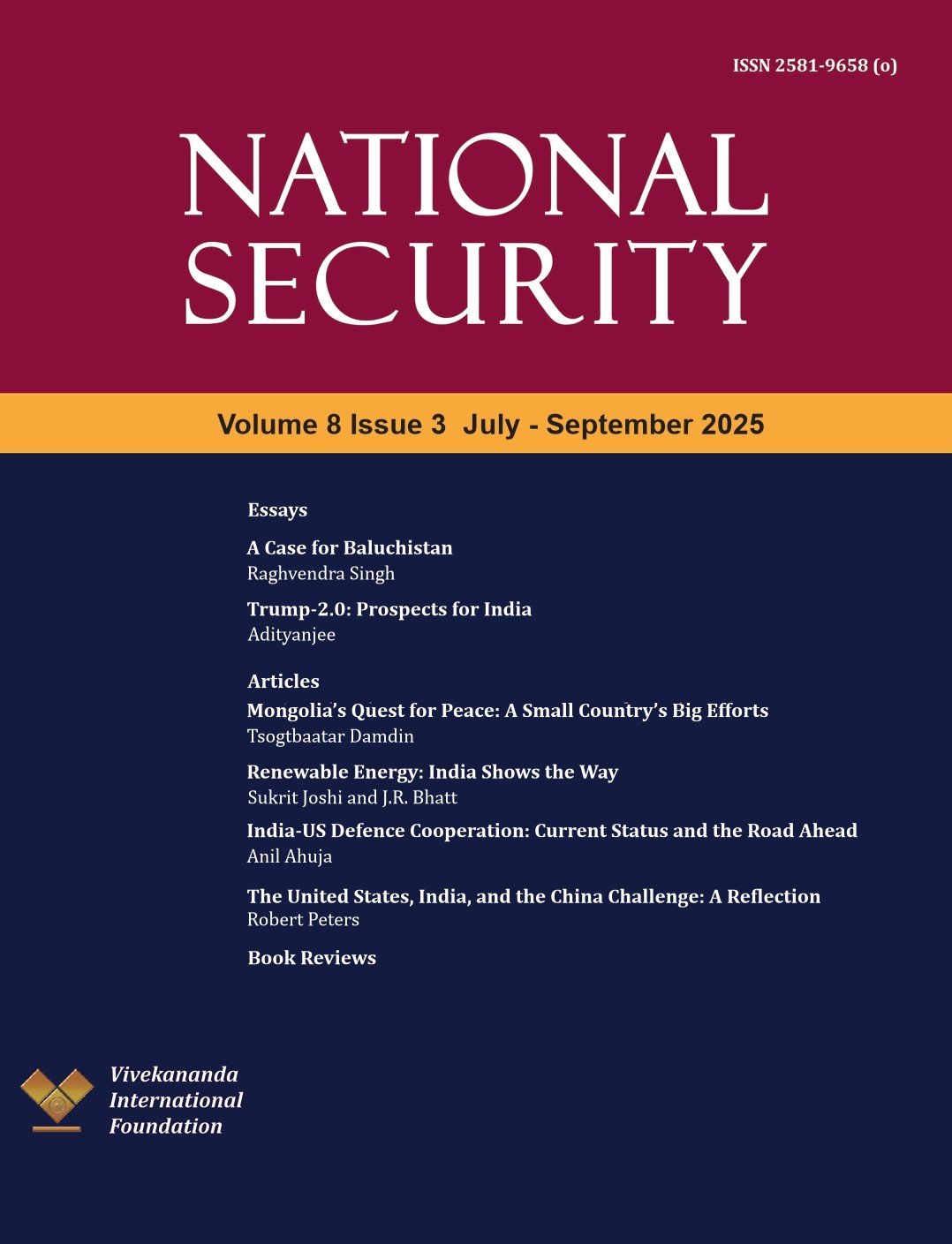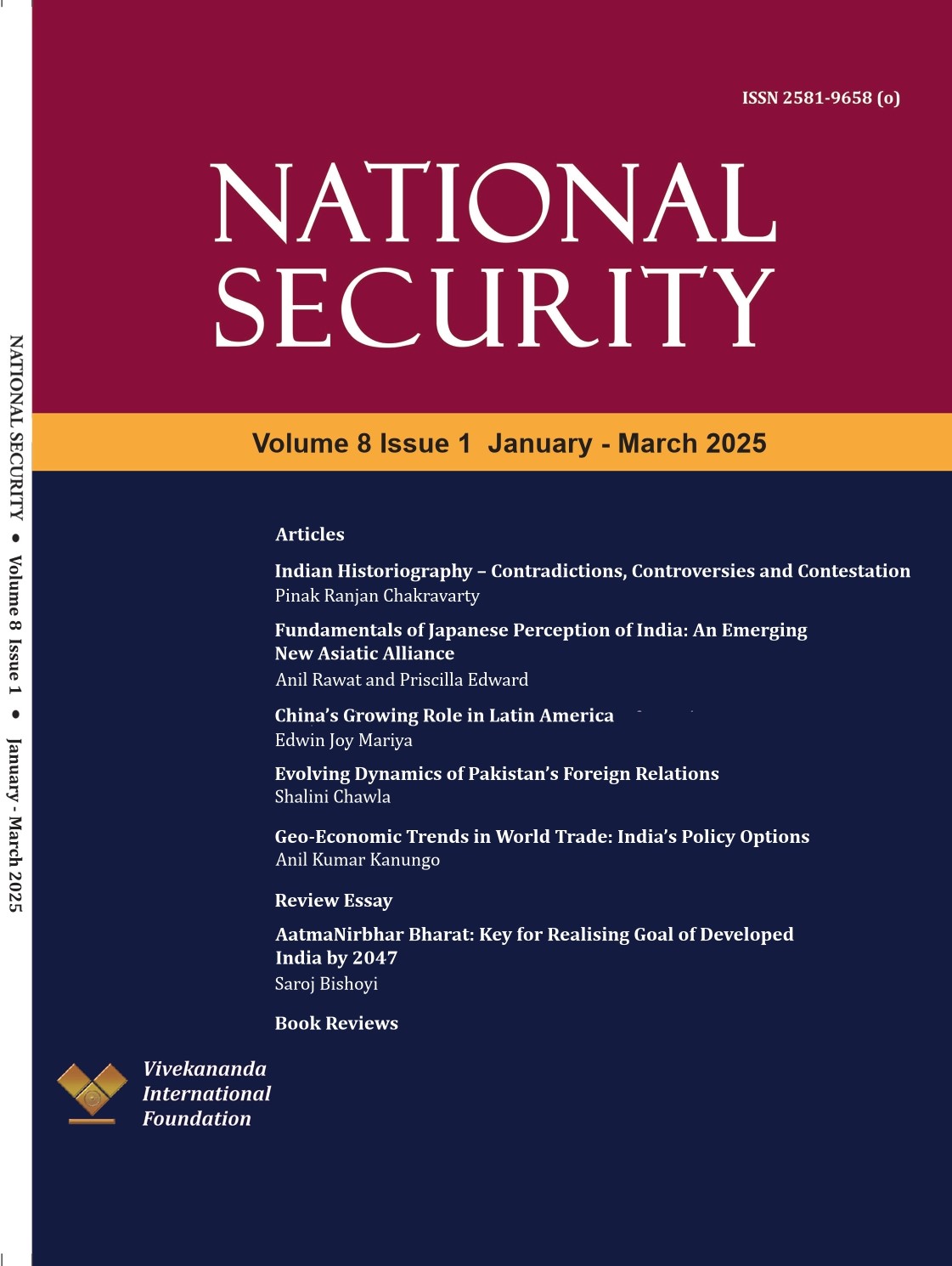National Security
Published in Association with Vivekananda International Foundation
Current Volume: 8 (2025 )
e-ISSN: 2581-9658
Periodicity: Quarterly
Month(s) of Publication: Mar, Jun, Sep & Dec
Subject: Political Science & International Affairs
DOI: 10.32381/NS
Online access is free for the Research Faculty of VIF
Regional Cooperation to Preserve the Himalayan System
By : Shailesh Nayak
Page No: 25-45
Abstract
The Himalaya is a unique ecological system and millions of people depend on its rivers for water, food and energy. It has distinctive biodiversity with a variety of high altitude vascular plants, grasslands, birds, etc. The Himalaya is under stress due to natural hazards such as earthquakes, landslides, floods, glacial lake outburst floods, climate change impacts such as the retreat of glaciers, and changes in precipitation patterns. Besides, anthropogenic activities related to infrastructure development, urbanisation, tourism, etc., also affect the Himalayan system. Defencerelated activities by China, Pakistan and India have placed additional pressure on the Himalayan ecology. The geological, cryospheric, hydrological and atmospheric processes and their interaction need to be modeled for the preservation of the Himalayan ecosystem. The formation of the Himalayan Science Council (HSC) is a positive step but it needs to set up monitoring systems for observing/measuring geological, hydrological, cryospheric, atmospheric and biological phenomena. Collaboration between research institutes of the Himalayan nations is a critical necessity.
Author :
Dr. Shailesh Nayak is the Director of National Institute of Advanced Studies (NIAS), Bengaluru, Karnataka.
DOI: http://doi.org/10.32381/NS.2023.06.01.2









